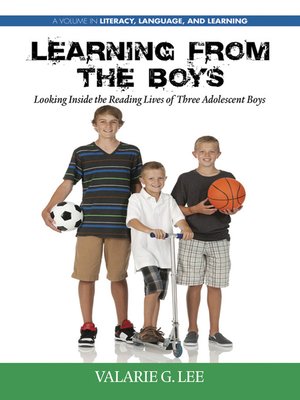Learning from the Boys
ebook ∣ Looking Inside the Reading Lives of Three Adolescent Boys · Literacy, Language and Learning
By Valarie G. Lee

Sign up to save your library
With an OverDrive account, you can save your favorite libraries for at-a-glance information about availability. Find out more about OverDrive accounts.
Find this title in Libby, the library reading app by OverDrive.



Search for a digital library with this title
Title found at these libraries:
| Library Name | Distance |
|---|---|
| Loading... |
The "Boy Crisis" is cited often in educational and news reports due to the consistent reading achievement gap for boys and the statistics paint a dismal picture of boys in school. Politicians and researchers often focus on boys' low scores on reading achievement tests and compare these scores to the girls' scores with little consideration for the actual reading lives of boys. As a result, adolescent boys' vernacular reading is most often misunderstood. This book documents my journey as a mother of three boys and teacher of adolescents, as I attempt to articulate both the in-school and out-of-school experiences of boys. The book describes my attempts at creating a more complete picture of the reading lives and experiences of adolescent boys by describing three boys and their reading experiences in their natural contexts. It provides a rich description, revealing disconnects between school literacy practices and boys' vernacular literacy practices. In this book, parents, administrators, and teachers will find discover the complexity of boys as readers, challenging educators to pursue effective practice and curricular decisions which go beyond the quick fixes for "the boy problem" so often seen in response to low test scores. This book provides parents, administrators, and teachers with an in-depth description of three boy readers. What emerges is a description of the complexity of boys as readers, challenging educators to pursue effective practice and curricular decisions which go beyond the quick fixes for "the boy problem" so often seen in response to low test scores. Teachers interested in mentoring boy readers will find this book helpful. This book can also be used with pre-service and in-service teachers, in undergraduate and graduate courses, and in professional development.







